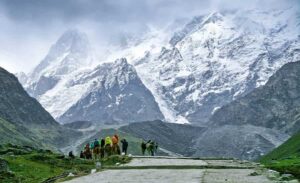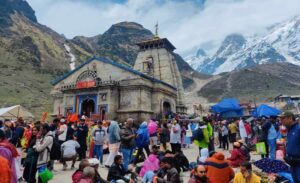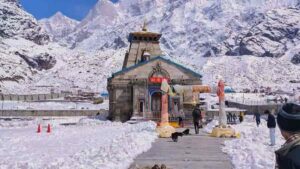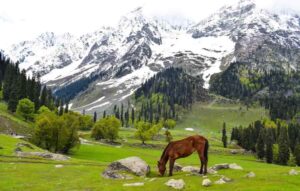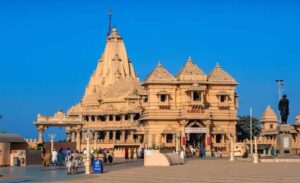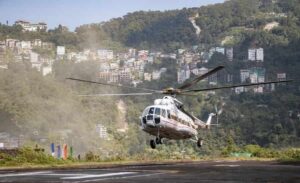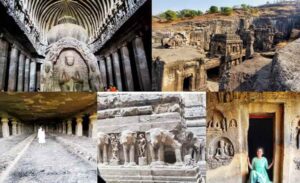Kedarnath Yatra Route Map
The Kedarnath Yatra is a sacred pilgrimage undertaken by thousands of devotees each year to seek blessings at the Kedarnath Temple, located in the Garhwal Himalayan range in Uttarakhand, India. This article serves as a comprehensive guide to the Kedarnath Yatra route, highlighting the key landmarks, transportation options, accommodation facilities, safety measures, and more.
Introduction
The Kedarnath Yatra holds immense significance for Hindus as it is believed to be one of the holiest pilgrimage sites in India. Nestled at an altitude of 3,583 meters (11,755 feet), the Kedarnath Temple is dedicated to Lord Shiva and attracts devotees from far and wide. To embark on this spiritual journey, it is essential to have a good understanding of the route and its various aspects.
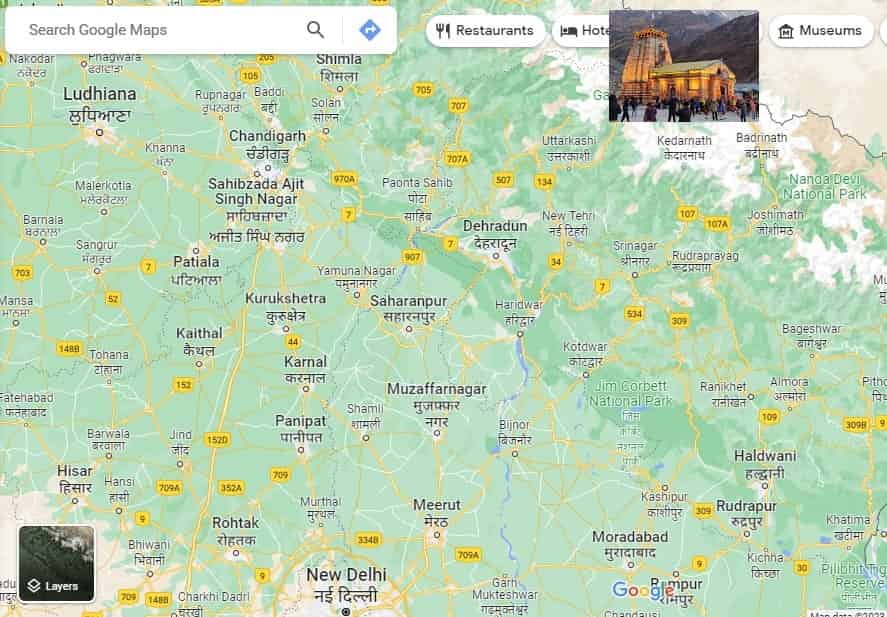
Importance of Kedarnath Yatra
The Kedarnath Yatra is not only a religious endeavor but also an opportunity for individuals to connect with nature and experience the serenity of the Himalayas. It is believed that undertaking this yatra and seeking Lord Shiva’s blessings can bring spiritual enlightenment and fulfill devotees’ wishes. The journey itself is considered a test of one’s faith, endurance, and determination.
Overview of Kedarnath Yatra Route
The Kedarnath Yatra typically begins from the city of Haridwar, which serves as the gateway to the Himalayas. From Haridwar, pilgrims have two primary options to reach Kedarnath: via road or by trekking through scenic mountain trails.
Starting point: Haridwar
Haridwar, situated on the banks of the holy river Ganges, is a popular starting point for the Kedarnath Yatra. Pilgrims gather here to take a dip in the sacred river and cleanse themselves of impurities before embarking on their spiritual journey.
Route options: Road and trekking
Pilgrims can opt to travel by road from Haridwar to reach Gaurikund, which is the last motorable point before the trek to Kedarnath begins. The road journey offers a convenient and relatively quicker option for those who prefer not to trek.
Alternatively, the more adventurous pilgrims can choose to trek from Gaurikund to Kedarnath. The trekking route is approximately 16 kilometers (10 miles) long and takes visitors through breathtaking landscapes, picturesque villages, and serene forests.
Route Map of Kedarnath Yatra
To better understand the Kedarnath Yatra route, let’s take a closer look at the key landmarks and towns along the way:
- Haridwar: Starting point of the yatra and a significant religious city.
- Rishikesh: Gateway to the Himalayas, known for its ashrams and spiritual retreats.
- Devprayag: Confluence of the Alaknanda and Bhagirathi rivers, forming the Ganges.
- Rudraprayag: Confluence of the Alaknanda and Mandakini rivers.
- Guptkashi: Base camp for the trek to Kedarnath, with various accommodation options.
- Gaurikund: Last motorable point; the trek to Kedarnath begins from here.
- Kedarnath: The final destination, home to the revered Kedarnath Temple.
Mode of Transportation
Road transport options
For those traveling by road, there are various modes of transportation available from Haridwar to Gaurikund, such as private taxis, shared jeeps, or state-run buses. The journey by road takes approximately 8 to 9 hours, depending on traffic and road conditions.
Trekking options
Pilgrims who choose to trek to Kedarnath can start their journey from Gaurikund. The trek offers a unique opportunity to immerse oneself in the natural beauty of the region. Ponies and palanquins are also available for those who prefer not to walk the entire distance.
Accommodation and Facilities
Along the Kedarnath Yatra route, several accommodations are available to cater to the needs of pilgrims. From budget guesthouses to luxury hotels, there are options to suit every traveler’s preferences. Additionally, government-operated campsites provide basic facilities for those trekking to Kedarnath.
Various facilities and services, including food stalls, medical aid centers, and shops, are strategically placed along the route to ensure pilgrims’ comfort and convenience.
Safety and Precautions
While undertaking the Kedarnath Yatra, it is crucial to prioritize safety and take necessary precautions. Here are some key factors to consider:
Health and fitness considerations
The Kedarnath Yatra involves trekking at high altitudes, which can pose challenges for individuals with health issues. It is advisable to consult a healthcare professional before embarking on the journey and ensure one is physically fit for the rigorous trek.
Weather conditions and seasonal variations
The weather in the Himalayan region can be unpredictable, and it is essential to be prepared for sudden changes. The yatra is typically open from April to November, with the summer months of May to June and September to October being the most popular due to favorable weather conditions.
Tips for a safe journey
- Carry appropriate warm clothing, rain gear, and sturdy footwear.
- Stay hydrated and carry an adequate supply of water.
- Acclimatize to the high altitudes gradually and avoid overexertion.
- Follow the instructions and guidelines provided by local authorities.
Best Time to Visit
The best time to undertake the Kedarnath Yatra is during the summer months of May to June and September to October. During these periods, the weather is relatively pleasant, with clear skies and manageable temperatures. It is advisable to avoid the monsoon season (July to August) due to heavy rainfall and the winter season (November to April) when the region experiences heavy snowfall.
Local Culture and Traditions
The Kedarnath Temple holds immense religious significance for Hindus and is an integral part of the Char Dham Yatra. The temple is believed to have been established by the revered sage Adi Shankaracharya and is dedicated to Lord Shiva. Devotees offer prayers and seek blessings at the temple, following age-old customs and rituals.
Things to Do and Places to Visit
While the primary attraction of the Kedarnath Yatra is the Kedarnath Temple itself, there are other points of interest worth exploring in the region:
- Kedarnath Temple: The main pilgrimage site, known for its architectural beauty and spiritual ambiance.
- Shankaracharya Samadhi: The final resting place of Adi Shankaracharya, located near the temple.
- Vasuki Tal: A pristine high-altitude lake located a few kilometers from Kedarnath.
- Chorabari Tal: Also known as Gandhi Sarovar, it is a picturesque lake on the trekking route to Kedarnath.
Conclusion
Embarking on the Kedarnath Yatra is a journey of faith, spirituality, and self-discovery. The route to Kedarnath offers breathtaking views, challenging treks, and a chance to connect with nature’s wonders. It is essential to plan the yatra meticulously, considering safety, weather conditions, and personal capabilities. By following this guide, pilgrims can embark on a memorable and fulfilling journey to seek the blessings of Lord Shiva at the sacred Kedarnath Temple.
FAQs
- Can I visit Kedarnath throughout the year?
- No, the Kedarnath Temple remains open only from April to November due to extreme weather conditions during the winter months.
- How long does it take to complete the Kedarnath Yatra?
- The duration of the yatra can vary depending on the mode of transportation chosen. The road journey from Haridwar takes around 8 to 9 hours, while the trek from Gaurikund to Kedarnath typically takes 2 days.
- Is it necessary to hire a guide for the yatra?
- Hiring a guide is not mandatory but can be helpful, especially for first-time visitors. Guides have local knowledge and can provide assistance, information, and ensure a smoother journey.
- What are the accommodation options in Kedarnath?
- In Kedarnath, there are various accommodation options ranging from budget guesthouses to luxury hotels. Additionally, government-operated campsites are available for those trekking to Kedarnath.
- Are there any age restrictions for the yatra?
- While there are no specific age restrictions, the Kedarnath Yatra involves trekking at high altitudes and can be physically demanding. It is advisable to assess one’s fitness levels and consult a healthcare professional before undertaking the journey.

